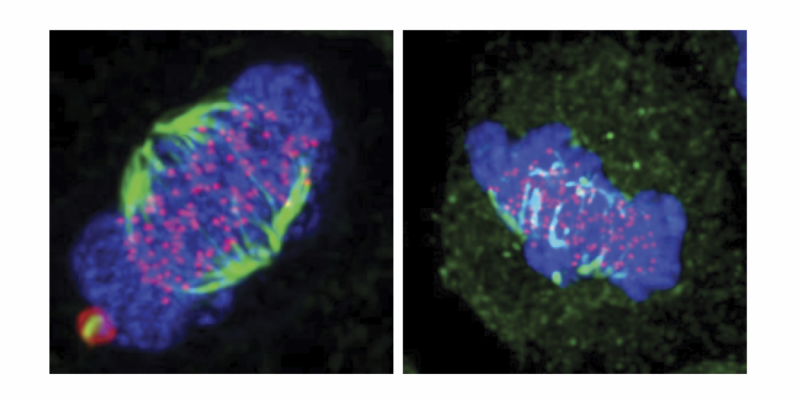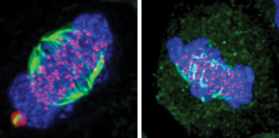Team identifies potential new targets for cancer treatments

An international consortium of scientists led by a group from the University of Leicester has announced a new advance in understanding the mechanisms of cancer and how to target it more effectively with new treatments.
Two papers published in the same issue of the world-leading Journal of Cell Biology have arisen from research work led by Professor Andrew Fry at the University of Leicester. Both papers suggest that new understanding of the mechanics of cell division can reveal new targets for cancer therapy.
Professor Fry, who is Director of Research in the College of Medicine, Biological Sciences and Psychology at Leicester, said: "Together, these two papers provide exciting new insights on how cells ensure that they faithfully pass on the right amount of genetic material to their offspring when they divide. They also highlight potential new targets for the development of novel cancer treatments.
"These papers identify a series of key steps that orchestrate the mechanics of cell division and highlight novel targets that could be inhibited to block cancer cell division. Through working with outstanding collaborators in Leicester and across the world, our future goal is to exploit this new understanding of the biology that underlies cell division to develop more effective medicines that will allow better treatments for patients with a wide range of cancers".
With funding from Worldwide Cancer Research, Cancer Research UK, The Wellcome Trust, BBSRC, Medical Research Council and Hope Against Cancer, a Leicestershire and Rutland-based charity, Professor Fry's group within the Department of Biochemistry at the University of Leicester has been studying the mechanics of cell division. Their aim is to gain new understanding on how this process is controlled in normal cells, how it goes wrong in cancer and how it might be targeted with drugs that can more effectively eradicate the tumour whilst causing less side-effects for cancer patients.

The first of these two papers, led by Dr Laura O'Regan, demonstrates that an enzyme called Nek6 controls the stability of the structural scaffold upon which the genetic material, encoded on chromosomes, is separated. They showed that Nek6 leads to recruitment onto this scaffold of a chaperone called Hsp70. Chaperones are proteins that act as cellular guardians folding proteins into their correct shape and assembling them into functional complexes. In the context of cancer, chaperones are particularly important as they protect cancer cells against the stressful environment of a tumour and keep them alive.
Not surprisingly then, there is growing interest from pharmaceutical companies in the development of chaperone inhibitors as novel anti-cancer therapies and the new findings provided in this paper will be key to identifying how best to use these new drugs to selectively kill cancer cells.
In the second paper, work led by Dr Suzanna Prosser demonstrated that an enzyme belonging to the same family as Nek6, in this case called Nek5, also provides a key function in enabling timely assembly of the structural scaffold required for chromosome division with loss of Nek5 leading to genetic damage.
More information: L. O'Regan, J. Sampson, M.W. Richards, A. Knebel, D. Roth, F.E. Hood, A. Straube, S.J. Royle, R. Bayliss, and A.M. Fry (2015) Hsp72 is targeted to the mitotic spindle by Nek6 to promote K-fiber assembly and mitotic progression. Journal of Cell Biology.
S.L. Prosser, N.K. Sahota, L. Pelletier, C.G. Morrison, and A.M. Fry (2015) Nek5 promotes centrosome integrity in interphase and loss of centrosome cohesion in mitosis. Journal of Cell Biology.
















